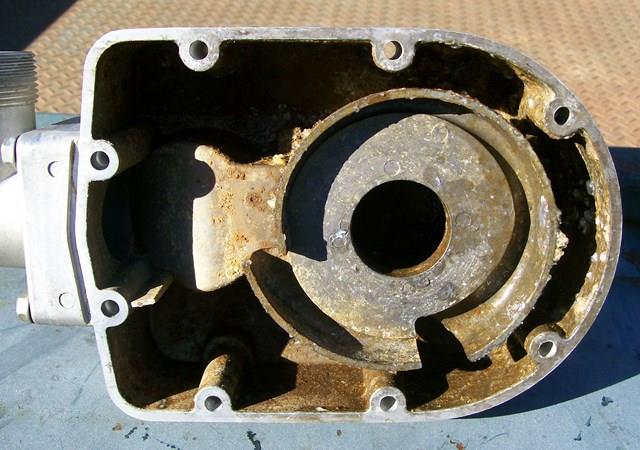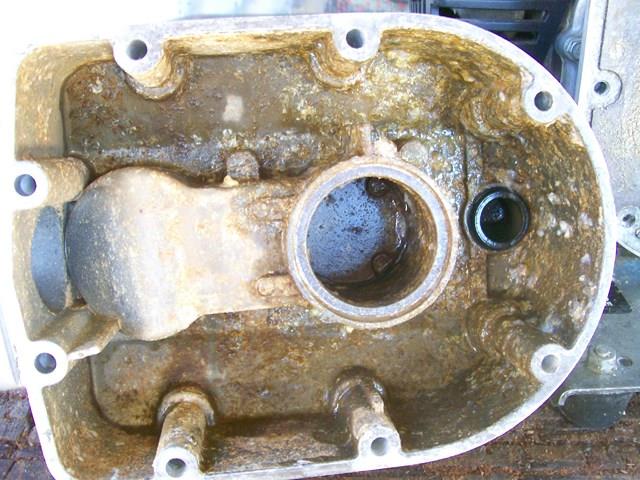G
Guest
Mechanical Water Pump Seals
About the greatest problem you will encounter in wet water prospecting is Mechanical Seal failure on your water pump. This will happen not if but when! How you will pick if your seal is a shot duct your pump may start sucking air and you will get a very noticeable performance drop. And or a water leak along the main drive shaft. Below will give you an idea just what a Mechanical Seal is and what they do.
Mechanical Seals for Water and Wastewater Pumps
By Allan R. Budris
Because mechanical shaft seal failures are the number one cause of pump downtime, the writer decided to dedicate this column to mechanical seal basics.
Years ago, most pump shafts were sealed using rings of soft packing, compressed by a packing gland, but this type of shaft seal required a fair amount of leakage just to lubricate the packing and keep it cool. Then came the development of the mechanical seal, which accomplishes the job of restraining product leakage around the pump shaft with two very flat surfaces (one stationary and one rotating). Even though these mechanical seal faces also require some (very small) leakage across the faces, to form a hydrodynamic film, this leakage normally evaporates and is not noticeable. Most pump shafts today are sealed by means of mechanical seals. However, because of the delicate components used for this new sealing method, mechanical seal failures are the greatest cause of pump down time. This begs for a better understanding of this seal type and its application.
Main elements of a mechanical seals
All mechanical seals are constructed with the following basic sets of parts: A set of (very flat) machined and lapped primary sealing faces: The very close (near) contact between these two flat mating surfaces, which are perpendicular to the shaft, minimizes leakage. Dissimilar materials are usually used for the faces, one hard and one softer, in order to prevent adhesion of the two faces. One of the faces is usually a non-galling material such as carbon-graphite. The other surface is usually a relatively hard material like silicon-carbide, or ceramic. However, when handling abrasive, two hard surfaces are normally used:
One face is held stationary in a housing
The other face is fixed to, and rotates with the shaft.
A set of secondary static seals, typically O-rings, wedges and/or V-rings.
One static seal, seals stationary component(s) to the housing
The other seal, seals the rotating component(s) to the shaft (it normally moves axially on the shaft or shaft sleeve)
A spring member to maintain face contact, such as a single spring, multiple springs or metal bellows.
Other mechanical seal hardware, which includes shaft sleeves, gland rings, collars, compression rings, and/or pins.
Mechanical seals require clean water, or other compatible liquid, for the lubrication of the seal faces. The faces in a typical mechanical seal are lubricated with a boundary layer of gas or liquid between the faces. Lubrication can be provided from the pumped liquid itself or from an external source, depending on system requirements.
http://www.waterworld.com/articles/...cal-seals-for-water-and-wastewater-pumps.html
replacement of the mechanical seal on the water pump
https://youtu.be/_baA-Nj22iU
[video=480,360]https://youtu.be/_baA-Nj22iU[/video]
https://youtu.be/Ntu1K-22gFo
[video=480,360]https://youtu.be/Ntu1K-22gFo[/video]
About the greatest problem you will encounter in wet water prospecting is Mechanical Seal failure on your water pump. This will happen not if but when! How you will pick if your seal is a shot duct your pump may start sucking air and you will get a very noticeable performance drop. And or a water leak along the main drive shaft. Below will give you an idea just what a Mechanical Seal is and what they do.
Mechanical Seals for Water and Wastewater Pumps
By Allan R. Budris
Because mechanical shaft seal failures are the number one cause of pump downtime, the writer decided to dedicate this column to mechanical seal basics.
Years ago, most pump shafts were sealed using rings of soft packing, compressed by a packing gland, but this type of shaft seal required a fair amount of leakage just to lubricate the packing and keep it cool. Then came the development of the mechanical seal, which accomplishes the job of restraining product leakage around the pump shaft with two very flat surfaces (one stationary and one rotating). Even though these mechanical seal faces also require some (very small) leakage across the faces, to form a hydrodynamic film, this leakage normally evaporates and is not noticeable. Most pump shafts today are sealed by means of mechanical seals. However, because of the delicate components used for this new sealing method, mechanical seal failures are the greatest cause of pump down time. This begs for a better understanding of this seal type and its application.
Main elements of a mechanical seals
All mechanical seals are constructed with the following basic sets of parts: A set of (very flat) machined and lapped primary sealing faces: The very close (near) contact between these two flat mating surfaces, which are perpendicular to the shaft, minimizes leakage. Dissimilar materials are usually used for the faces, one hard and one softer, in order to prevent adhesion of the two faces. One of the faces is usually a non-galling material such as carbon-graphite. The other surface is usually a relatively hard material like silicon-carbide, or ceramic. However, when handling abrasive, two hard surfaces are normally used:
One face is held stationary in a housing
The other face is fixed to, and rotates with the shaft.
A set of secondary static seals, typically O-rings, wedges and/or V-rings.
One static seal, seals stationary component(s) to the housing
The other seal, seals the rotating component(s) to the shaft (it normally moves axially on the shaft or shaft sleeve)
A spring member to maintain face contact, such as a single spring, multiple springs or metal bellows.
Other mechanical seal hardware, which includes shaft sleeves, gland rings, collars, compression rings, and/or pins.
Mechanical seals require clean water, or other compatible liquid, for the lubrication of the seal faces. The faces in a typical mechanical seal are lubricated with a boundary layer of gas or liquid between the faces. Lubrication can be provided from the pumped liquid itself or from an external source, depending on system requirements.
http://www.waterworld.com/articles/...cal-seals-for-water-and-wastewater-pumps.html
replacement of the mechanical seal on the water pump
https://youtu.be/_baA-Nj22iU
[video=480,360]https://youtu.be/_baA-Nj22iU[/video]
https://youtu.be/Ntu1K-22gFo
[video=480,360]https://youtu.be/Ntu1K-22gFo[/video]







